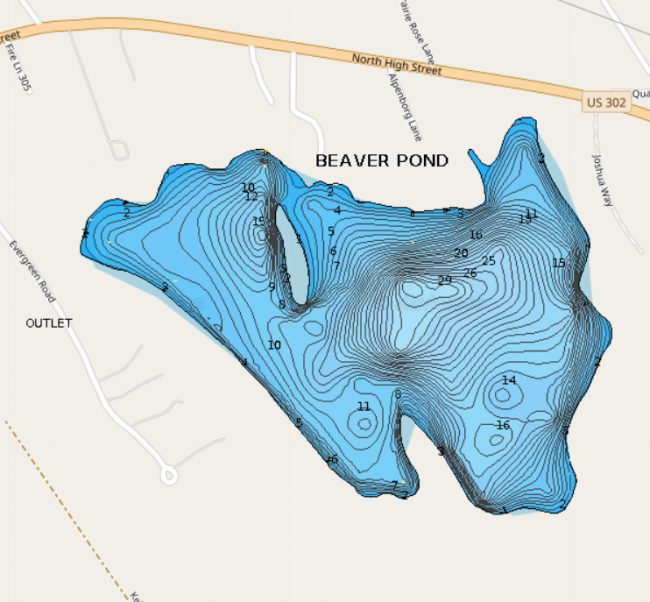

A grist mill was first built on Sucker Brook, which is the outlet of Beaver Pond in the early 1800s. “Mill Privilege” or water rights to the stream and pond were sold or handed down at least six more times after the initial mill was constructed. Today, the stream has returned to a more natural state and salmon sometimes swim up it in the winter months from neighboring Moose Pond. Evidence of prior forestry can also be seen in some of the old logs that stick up to the surface. LEA first monitored water quality on Beaver Pond in 1988. Shortly after, in 1990, it was added to our biweekly monitoring program.
Beaver pond thermally stratifies during the summer, and the amount of cold, oxygenated water available for salmonid management is very limited. In addition, the presence of competing and predatory warmwater fish further reduces the potential for a coldwater fishery. Beaver Pond’s habitat is ideal for warmwater species, and largemouth bass, chain pickerel, and white perch all produce excellent angling opportunities.
Less than 1 percent of soils in the watershed are type A soils. A soils tend to be well drained sands, loams and gravels. When vegetation is removed and the soil is exposed they can be susceptible to erosion. Because they are often coarse with ample pore space, there is low runoff potential and water will not usually pool on them. These soils can be good places to site leach fields or infiltrate stormwater from a home or residence.
88 percent of soils in the watershed are type C soils. C soils have low infiltration rates and typically have a layer that impedes the movement of water. These soils are made of sands, clays and loams and are one of the most common soil types in western Maine.
1 percent of soils in the watershed are type D soils. D soils have a high runoff potential and very low infiltration rates. Soils with a high water table, clay or other impervious layer near the surface are typically D soils. These soils are often associated with wetlands.
7 percent of soils in the watershed are type C/D soils. C/D soils are a mix of these two soil types. They have fairly high runoff potential and low infiltration rates and often pool water.
The remaining 4 percent of the watershed is taken up by the pond.